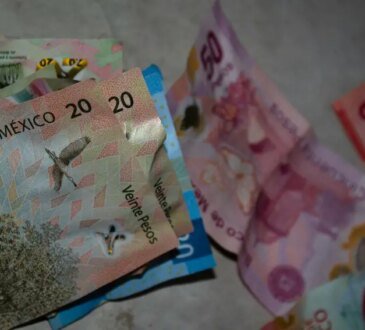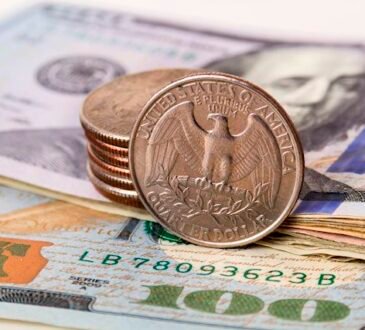- The Australian Dollar receives support following the release of the Aussie labor figures on Thursday.
- Australia’s Employment Change increased by 64.1K in September, bringing the total employment to a record 14.52 million.
- Traders anticipate the US Retail Sales data, with expectations for a 0.3% increase MoM in September, up from 0.1% prior.
The Australian Dollar (AUD) halts its three-day losing streak against the US Dollar (USD) after a strong Australian employment report was released on Thursday. The seasonally adjusted Employment Change in Australia surged by 64.1K in September, bringing the total employment to a record 14.52 million. This far surpassed market expectations of a 25.0K increase, following a revised rise of 42.6K in the previous month.
Meanwhile, Australia’s seasonally adjusted Unemployment Rate remained steady at 4.1% in September, matching the revised figure for August and coming in lower than the anticipated 4.2%. The number of unemployed individuals decreased by 9.2K, down to 615,700.
The US Dollar (USD) found support from strong labor and inflation data, which has tempered expectations for aggressive easing by the Federal Reserve (Fed).
Traders are keenly awaiting the US Retail Sales data, set to be released later in the North American session. Expectations are for monthly consumer spending to increase by 0.3% in September, up from 0.1% in the previous reading.
Daily Digest Market Movers: Australian Dollar gains ground following solid employment data
- According to the CME FedWatch Tool, there is currently a 92.1% probability of a 25-basis-point rate cut in November, with no expectation of a larger 50-basis-point reduction.
- During a property market briefing on Thursday, China’s Housing Minister announced plans to initiate one million village urbanization projects. The government aims to expand the list of approved projects and increase bank lending to 4 trillion Yuan. Regarding property restrictions, the minister indicated that decisions will be made by individual cities based on their economic conditions and local property market situations, according to Bloomberg.
- Reserve Bank of Australia (RBA) Deputy Governor Sarah Hunter reiterated on Wednesday the central bank’s commitment to curbing inflation, emphasizing that although inflation expectations remain well-anchored, ongoing price pressures continue to present significant challenges.
- On Tuesday, Federal Reserve Bank of Atlanta President Raphael Bostic stated that he anticipates just one more interest rate cut of 25 basis points this year, as reflected in his projections during last month’s US central bank meeting. “The median forecast was for 50 basis points beyond the 50 basis points already implemented in September. My projection was for an additional 25 basis points,” he said, according to Reuters.
- The Australian weekly survey of Consumer Confidence showed little movement, with the ANZ-Roy Morgan Consumer Confidence index remaining steady at 83.4 this week. Despite the unchanged figure, the longer-term trend shows that Consumer Confidence has been below the 85.0 mark for 89 consecutive weeks. The current reading is 1.3 points higher than the 2024 weekly average of 82.1.
- Federal Reserve (Fed) Bank of Minneapolis President Neel Kashkari reassured markets on Monday by reaffirming the Fed’s data-dependent approach. Kashkari reiterated familiar Fed policymaker views on the strength of the US economy, noting continued easing of inflationary pressures and a robust labor market, despite a recent uptick in the overall unemployment rate, per Reuters.
- The Commonwealth Bank of Australia indicated expectations that the Reserve Bank of Australia will implement a 25 basis point rate cut by the end of 2024. The report suggested that a stronger disinflationary trend than the RBA anticipates is essential for the Board to consider easing policy within this calendar year.
- The National Bureau of Statistics of China reported that the country’s monthly Consumer Price Index (CPI) remained unchanged at 0% in September, down from August’s 0.4% increase. The annual inflation rate rose by 0.4%, falling short of the anticipated 0.6%. Additionally, the Producer Price Index (PPI) decreased by 2.8% year-on-year, a larger drop than the previous decline of 1.8% and exceeding expectations of a 2.5% decrease.
Technical Analysis: Australian Dollar tests 0.6700, upper boundary of a descending channel
The AUD/USD pair hovers around 0.6700 on Thursday. An analysis of the daily chart shows the pair testing the upper boundary of a descending channel. If it successfully breaks above this channel, it could signal a shift in momentum from bearish to bullish. However, bearish sentiment remains dominant with the 14-day Relative Strength Index (RSI) still below 50.
On the downside, the AUD/USD pair could target its eight-week low of 0.6622, last touched on September 11. A break below this level might lead to further declines, with the next target being the descending channel’s lower boundary near the psychological support level of 0.6580.
In terms of resistance, a breakout above the descending channel could bring the nine-day Exponential Moving Average (EMA) around 0.6729 into focus, followed by the key psychological barrier level at 0.6800.
AUD/USD: Daily Chart
Australian Dollar PRICE Today
The table below shows the percentage change of Australian Dollar (AUD) against listed major currencies today. Australian Dollar was the strongest against the Swiss Franc.
| USD | EUR | GBP | JPY | CAD | AUD | NZD | CHF | |
|---|---|---|---|---|---|---|---|---|
| USD | 0.08% | 0.06% | -0.03% | 0.13% | -0.26% | -0.06% | 0.12% | |
| EUR | -0.08% | -0.04% | -0.10% | 0.05% | -0.35% | -0.11% | 0.04% | |
| GBP | -0.06% | 0.04% | -0.08% | 0.08% | -0.31% | -0.10% | 0.09% | |
| JPY | 0.03% | 0.10% | 0.08% | 0.17% | -0.24% | -0.05% | 0.17% | |
| CAD | -0.13% | -0.05% | -0.08% | -0.17% | -0.39% | -0.18% | 0.01% | |
| AUD | 0.26% | 0.35% | 0.31% | 0.24% | 0.39% | 0.21% | 0.41% | |
| NZD | 0.06% | 0.11% | 0.10% | 0.05% | 0.18% | -0.21% | 0.19% | |
| CHF | -0.12% | -0.04% | -0.09% | -0.17% | -0.01% | -0.41% | -0.19% |
The heat map shows percentage changes of major currencies against each other. The base currency is picked from the left column, while the quote currency is picked from the top row. For example, if you pick the Australian Dollar from the left column and move along the horizontal line to the US Dollar, the percentage change displayed in the box will represent AUD (base)/USD (quote).
Australian Dollar FAQs
One of the most significant factors for the Australian Dollar (AUD) is the level of interest rates set by the Reserve Bank of Australia (RBA). Because Australia is a resource-rich country another key driver is the price of its biggest export, Iron Ore. The health of the Chinese economy, its largest trading partner, is a factor, as well as inflation in Australia, its growth rate and Trade Balance. Market sentiment – whether investors are taking on more risky assets (risk-on) or seeking safe-havens (risk-off) – is also a factor, with risk-on positive for AUD.
The Reserve Bank of Australia (RBA) influences the Australian Dollar (AUD) by setting the level of interest rates that Australian banks can lend to each other. This influences the level of interest rates in the economy as a whole. The main goal of the RBA is to maintain a stable inflation rate of 2-3% by adjusting interest rates up or down. Relatively high interest rates compared to other major central banks support the AUD, and the opposite for relatively low. The RBA can also use quantitative easing and tightening to influence credit conditions, with the former AUD-negative and the latter AUD-positive.
China is Australia’s largest trading partner so the health of the Chinese economy is a major influence on the value of the Australian Dollar (AUD). When the Chinese economy is doing well it purchases more raw materials, goods and services from Australia, lifting demand for the AUD, and pushing up its value. The opposite is the case when the Chinese economy is not growing as fast as expected. Positive or negative surprises in Chinese growth data, therefore, often have a direct impact on the Australian Dollar and its pairs.
Iron Ore is Australia’s largest export, accounting for $118 billion a year according to data from 2021, with China as its primary destination. The price of Iron Ore, therefore, can be a driver of the Australian Dollar. Generally, if the price of Iron Ore rises, AUD also goes up, as aggregate demand for the currency increases. The opposite is the case if the price of Iron Ore falls. Higher Iron Ore prices also tend to result in a greater likelihood of a positive Trade Balance for Australia, which is also positive of the AUD.
The Trade Balance, which is the difference between what a country earns from its exports versus what it pays for its imports, is another factor that can influence the value of the Australian Dollar. If Australia produces highly sought after exports, then its currency will gain in value purely from the surplus demand created from foreign buyers seeking to purchase its exports versus what it spends to purchase imports. Therefore, a positive net Trade Balance strengthens the AUD, with the opposite effect if the Trade Balance is negative.






